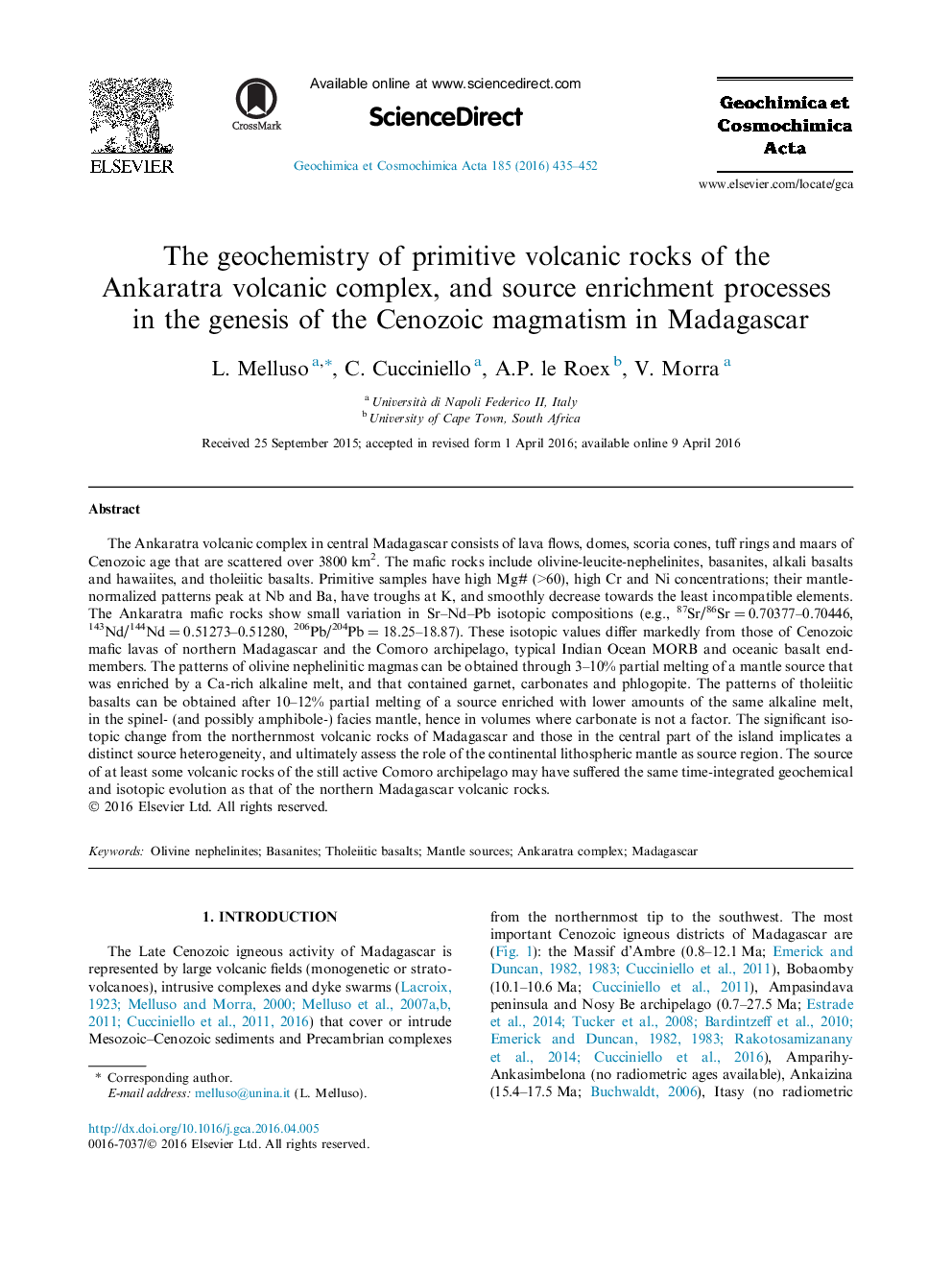| Article ID | Journal | Published Year | Pages | File Type |
|---|---|---|---|---|
| 6437388 | Geochimica et Cosmochimica Acta | 2016 | 18 Pages |
The Ankaratra volcanic complex in central Madagascar consists of lava flows, domes, scoria cones, tuff rings and maars of Cenozoic age that are scattered over 3800 km2. The mafic rocks include olivine-leucite-nephelinites, basanites, alkali basalts and hawaiites, and tholeiitic basalts. Primitive samples have high Mg# (>60), high Cr and Ni concentrations; their mantle-normalized patterns peak at Nb and Ba, have troughs at K, and smoothly decrease towards the least incompatible elements. The Ankaratra mafic rocks show small variation in Sr-Nd-Pb isotopic compositions (e.g., 87Sr/86Sr = 0.70377-0.70446, 143Nd/144Nd = 0.51273-0.51280, 206Pb/204Pb = 18.25-18.87). These isotopic values differ markedly from those of Cenozoic mafic lavas of northern Madagascar and the Comoro archipelago, typical Indian Ocean MORB and oceanic basalt end-members. The patterns of olivine nephelinitic magmas can be obtained through 3-10% partial melting of a mantle source that was enriched by a Ca-rich alkaline melt, and that contained garnet, carbonates and phlogopite. The patterns of tholeiitic basalts can be obtained after 10-12% partial melting of a source enriched with lower amounts of the same alkaline melt, in the spinel- (and possibly amphibole-) facies mantle, hence in volumes where carbonate is not a factor. The significant isotopic change from the northernmost volcanic rocks of Madagascar and those in the central part of the island implicates a distinct source heterogeneity, and ultimately assess the role of the continental lithospheric mantle as source region. The source of at least some volcanic rocks of the still active Comoro archipelago may have suffered the same time-integrated geochemical and isotopic evolution as that of the northern Madagascar volcanic rocks.
